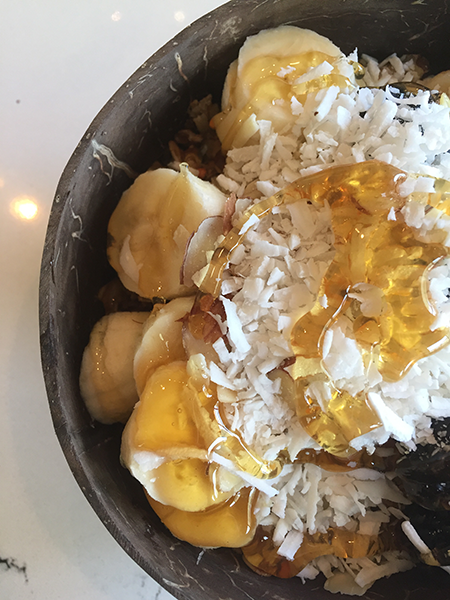Right around now, my phone starts ringing with the calls of highly-motivated people who want to undo eleven months of damage in one month. That’s approximately how long their commitment lasts. They will, at any cost or level of starvation or deprivation, do ‘whatever it takes’ to turn new leaves and start the New Year as a new human. Stop that. That is not, for most people, how to create sustainable, lasting change.
The culture of embracing extremes is part of our personal health struggles. We seem to be all in or all out. We are either on some fancy cleanse or binging on the latest Oreo invention. When we get tired of the guilt and bloat, or when the self-image issues and the gluttony have had their run, we know we’ll ‘get back on track.’
The problem with being on track is that we’re striving for a level of perfection that is unsustainable, unrealistic, and no damn fun at all. We teeter-totter to both ends of the spectrum. We hate to stop the Oreo binge because the level of commitment we’re asking of ourselves on the other end is so uncomfortable. No Oreos? Ever? Let me just finish this box and then I’ll be ready to say goodbye. There are other options or other rides on the playground.
The neurology of change is a fascinating one, and it is biophysical. It is a firing and wiring in the brain that creates those other options and makes them regularly available. A Whole30 jumpstart might seem like the right idea, but after 30 days, your old wiring is still present. This is why when people get off-track, the slippery slope sucks them into a neurology as old as their existence.
In our brains, when we encounter a familiar situation but respond in a different direction, the firing of synapses creates a new connection with just a few instances of that firing. So if your habit is to come home and pour a glass of wine, but you begin pouring a glass of sparkling water instead, you create more options in your brain.

This is how we break habits most effectively and create true change. Choosing not to do something is not enough—our brains need alternatives—and the more, the merrier.
If this is your year to create change, take time to look at your long-term goal. Is it five years or one year down the road? What changes need to take place to get there? What behaviors will you change individually to create a shift in direction? What behaviors are limiting you from achieving this goal?
Commit to making one change at a time. Commit to providing yourself with options instead of just depriving yourself. Celebrate each change as the foundation of the next change you will make.
If you want to get healthier this year, maybe January is the month you will focus solely on increasing your vegetable intake with each meal. Or, maybe you’ll focus on increasing hydration. Once you’ve implemented this so well it has become second nature, you’re ready for the next step.
Maybe February is the month you’ll work on establishing a workout routine that actually fits into your life. By March, when most people have long forgotten New Years (though a few are hanging on by the thread of Lent), you might be ready for the next exciting change you’re going to create in your life.
That ‘in your life’ part is important. Why work hard for something that is only going to be a temporary fad for you? Yes, we feel better when we’re in control and on some sort of restrictive diet or health kick, but is it improving our life in the long run? Are we going to apply our learning to the rest of our days?
This year, look at the big picture. Pause. And resolve to create change that shifts the course of your life—not just your New Year. And do it one step at a time, with an Oreo here or there. //
Ammi Midstoke lives in Sandpoint, Idaho, where she raises her daughter on a deeply-ingrained fear of gluten and an arguably-dangerous appetite for adventure. She wrote about BCAAs in the December issue.












